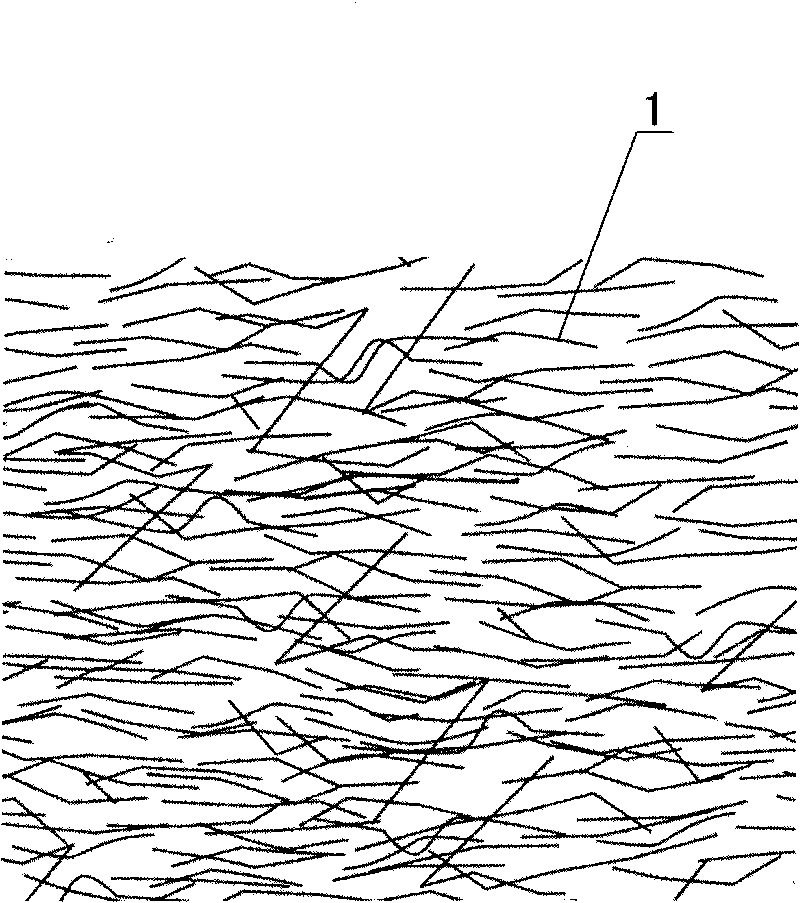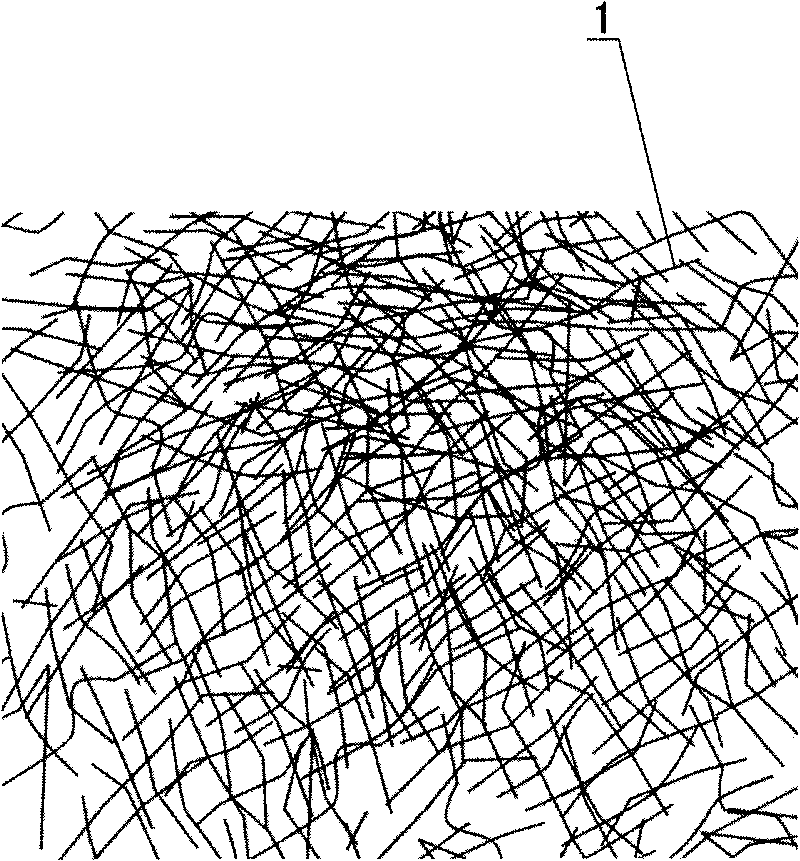Insulation flocculus and manufacture method thereof
A manufacturing method and technology of flakes, which are applied in the directions of non-woven fabrics, textiles and papermaking, adhesives, etc., can solve the problems of soft and comfortable thermal insulation flakes, hard hand feeling of thermal insulation flakes, large space between fibers, etc.
- Summary
- Abstract
- Description
- Claims
- Application Information
AI Technical Summary
Problems solved by technology
Method used
Image
Examples
Embodiment 1
[0032]First, by weight, the following raw materials are equipped: 40% of ultra-fine denier fibers (all are ultra-fine denier polyester fibers, the fiber fineness is 0.78dtex, and the length is 51mm), 38% of micro-denier fibers (all are micro-denier polyester fibers) Polyester fiber with a fiber fineness of 1.32dtex and a length of 51mm), binder fiber 20% (all polypropylene polyester composite fibers with a fiber fineness of 4.4dtex and a length of 51mm), binder 2% .
[0033] Then, follow the steps below to make thermal insulation batting successively (refer to figure 1 ):
[0034] (1) Fiber raw materials such as superfine denier fibers, fine denier fibers and bonding fibers are opened and mixed;
[0035] (2) Combing and laying the mixed fiber raw materials to form a fiber web; the carding equipment used uses single cylinder and double doffers, and the card clothing adopts an ultra-fine tooth structure (the tooth spacing of the card clothing is 1.8mm) ;
[0036] (3) Carry o...
Embodiment 2
[0044] First, by weight, the following raw materials are equipped: 80% of ultra-fine denier fibers (all are ultra-fine denier polypropylene fibers, the fiber fineness is 1.1dtex, and the length is 64mm), 10% of micro-denier fibers (all are micro-denier fibers Polyester fiber, its fiber fineness is 5.5dtex, and length is 51mm), bonding fiber 10% (all are sheath-core structure low melting point polyester fiber, and its fiber fineness is 4.4dtex, and length is 51mm).
[0045] The manufacture method of this warm-keeping batting is basically identical with embodiment 1, but omits step (5), namely directly to step (6) from step (4).
[0046] Detect the thermal insulation wadding that present embodiment obtains, 200g / m 2 The thermal batting has a Cro value of 3.6clo and a loft of 60m 3 / g, the compression recovery rate is 93%, the compression rate is 74%, and the breaking strength is 7.2N in the longitudinal direction and 20N in the transverse direction.
Embodiment 3
[0048] At first, by weight, be equipped with following raw material: superfine denier fiber 20% (its fiber fineness is 0.11dtex, length is 51mm, wherein ultrafine denier polyamide fiber and ultrafine denier polyacrylonitrile fiber each account for half), 50% of fine-denier fibers (20% of which are two-dimensional crimped fine-denier polyamide fibers with a fiber fineness of 1.2dtex and a length of 32mm; another 30% of three-dimensional crimped fine-denier polyacrylonitrile fibers with a fiber fineness of 3.3 dtex, length is 51mm), bonding fiber 30% (all are low-melting point polyester fiber, and its fiber fineness is 1.2dtex, and length is 58mm).
[0049] The manufacture method of this warm-keeping batting is basically identical with embodiment 1, but omits step (5), namely directly to step (6) from step (4).
[0050] Detect the thermal insulation wadding that present embodiment obtains, 200g / m 2 The thermal batting has a Cro value of 3.3clo and a loft of 57m 3 / g, the compr...
PUM
| Property | Measurement | Unit |
|---|---|---|
| Fiber fineness | aaaaa | aaaaa |
| Length | aaaaa | aaaaa |
| Fiber fineness | aaaaa | aaaaa |
Abstract
Description
Claims
Application Information
 Login to View More
Login to View More - R&D
- Intellectual Property
- Life Sciences
- Materials
- Tech Scout
- Unparalleled Data Quality
- Higher Quality Content
- 60% Fewer Hallucinations
Browse by: Latest US Patents, China's latest patents, Technical Efficacy Thesaurus, Application Domain, Technology Topic, Popular Technical Reports.
© 2025 PatSnap. All rights reserved.Legal|Privacy policy|Modern Slavery Act Transparency Statement|Sitemap|About US| Contact US: help@patsnap.com



